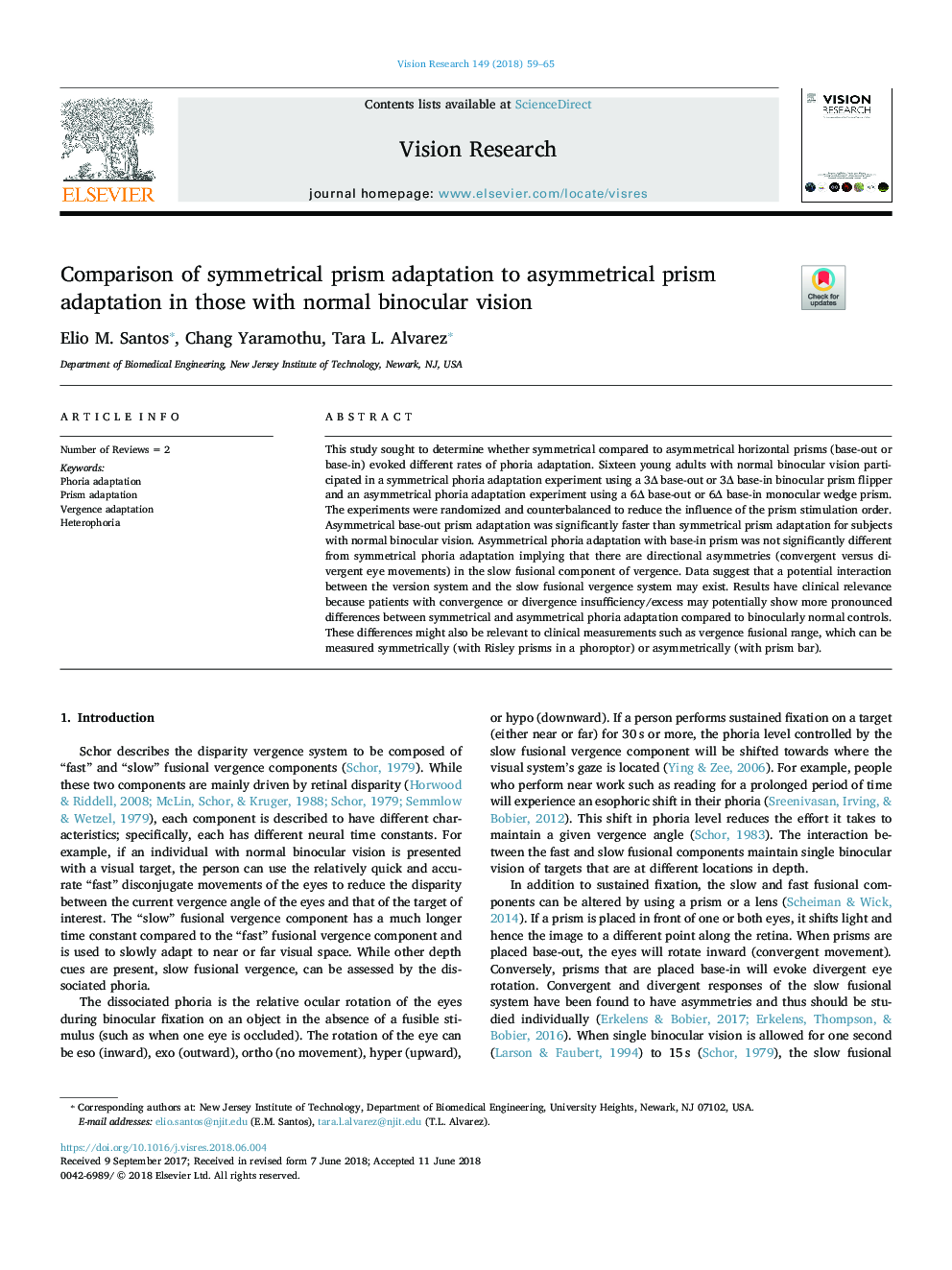| Article ID | Journal | Published Year | Pages | File Type |
|---|---|---|---|---|
| 8795285 | Vision Research | 2018 | 7 Pages |
Abstract
This study sought to determine whether symmetrical compared to asymmetrical horizontal prisms (base-out or base-in) evoked different rates of phoria adaptation. Sixteen young adults with normal binocular vision participated in a symmetrical phoria adaptation experiment using a 3Î base-out or 3Î base-in binocular prism flipper and an asymmetrical phoria adaptation experiment using a 6Î base-out or 6Î base-in monocular wedge prism. The experiments were randomized and counterbalanced to reduce the influence of the prism stimulation order. Asymmetrical base-out prism adaptation was significantly faster than symmetrical prism adaptation for subjects with normal binocular vision. Asymmetrical phoria adaptation with base-in prism was not significantly different from symmetrical phoria adaptation implying that there are directional asymmetries (convergent versus divergent eye movements) in the slow fusional component of vergence. Data suggest that a potential interaction between the version system and the slow fusional vergence system may exist. Results have clinical relevance because patients with convergence or divergence insufficiency/excess may potentially show more pronounced differences between symmetrical and asymmetrical phoria adaptation compared to binocularly normal controls. These differences might also be relevant to clinical measurements such as vergence fusional range, which can be measured symmetrically (with Risley prisms in a phoroptor) or asymmetrically (with prism bar).
Related Topics
Life Sciences
Neuroscience
Sensory Systems
Authors
Elio M. Santos, Chang Yaramothu, Tara L. Alvarez,
